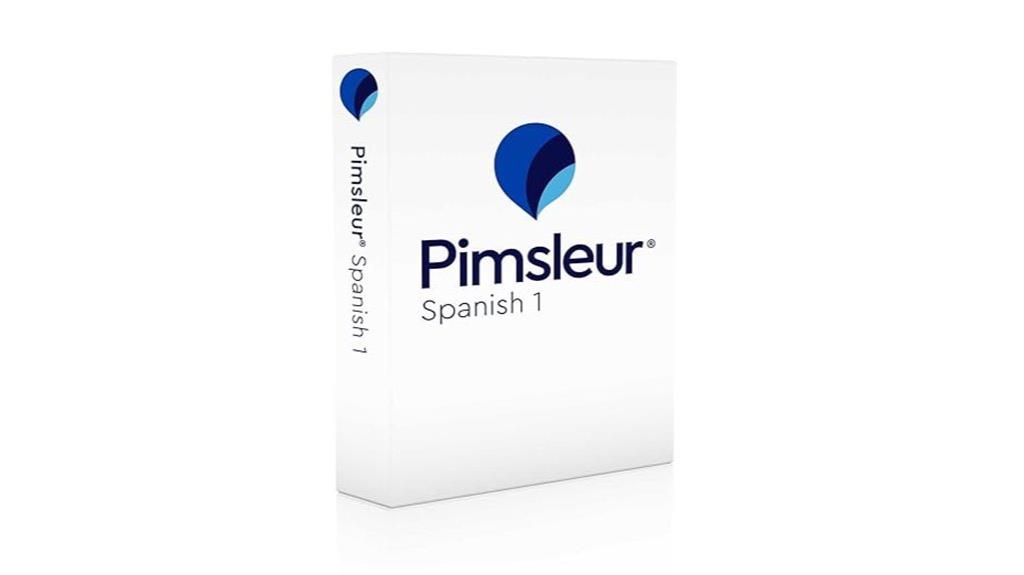If you’re looking for the best language learning app for couples to study together, I recommend one that offers cross-platform compatibility, shared goals, and interactive features like pronunciation feedback and conversational exercises. It should also have progress tracking, flexible subscription plans, and a variety of languages to suit your needs. Choosing the right app can boost your motivation and make learning fun. Keep going, and you’ll discover how to find the perfect fit for your language journey.
Key Takeaways
- Look for apps offering shared goals, interactive features, and real-time communication to enhance couple-based learning.
- Prioritize platforms with progress tracking, gamification, and personalized feedback to maintain motivation.
- Choose apps supporting multiple languages and regional dialects for cultural relevance and diverse learning needs.
- Consider compatibility across iOS, Android, and web for seamless, cross-device collaboration.
- Evaluate cost options, including free trials and tiered subscriptions, to find the best value for couples learning together.
Pimsleur Spanish Level 1 CD: Learn Latin American Spanish

If you’re looking for an effective way to learn Latin American Spanish with your partner, the Pimsleur Spanish Level 1 CD is an excellent choice for auditory learners who prefer practical, conversation-based practice. I found that it starts with slow, clear pronunciation, which helps with tricky sounds and builds confidence. The lessons focus on real-life scenarios, gradually increasing in complexity, so you can jump into everyday conversations quickly. I appreciated how it emphasizes listening and repeating, reinforcing pronunciation and basic grammar without overwhelming you with vocabulary. It’s perfect for commutes and can be combined with other resources for a well-rounded learning experience.
Best For: auditory learners, travelers, and partners seeking practical, conversation-based Latin American Spanish practice.
Pros:
- Emphasizes clear pronunciation and listening skills, ideal for pronunciation and sound recognition.
- Uses real-life scenarios and gradual complexity to build confidence quickly in everyday conversations.
- Convenient for commutes and can be easily supplemented with other resources for comprehensive learning.
Cons:
- Does not include reading or writing components, limiting literacy development.
- Vocabulary focus is limited, requiring additional vocabulary building efforts.
- Some learners may find the pace slow or prefer more interactive, grammar-focused instruction.
Factors to Consider When Choosing Language Learning Apps Couples
When choosing a language learning app for couples, I think about how well it functions across our devices and if it fits our shared goals. I also consider the interactive features and how easily we can track our progress together. Finally, cost and subscription options matter to make sure we find a plan that works for both of us without breaking the bank.
Compatibility With Devices
Choosing a language learning app that works smoothly across all your devices is essential for maintaining consistent progress with your partner. I recommend checking if the app is compatible with iOS, Android, and web browsers, so everyone can use it regardless of their device. Cross-platform synchronization is a big plus, allowing your progress to update seamlessly across devices. Also, verify the app’s system requirements and OS versions to avoid installation or functionality issues. Offline access or downloadable content can be a game-changer, especially if you have limited internet. In conclusion, consider how often the app gets updates and its support policies—staying compatible with future device upgrades can save you headaches down the line. Compatibility ensures a smooth, uninterrupted learning experience for both of you.
Shared Learning Goals
Shared learning goals are essential for couples because they keep both partners motivated and focused on their language journey. When we set clear, mutual objectives, it’s easier to measure progress and stay committed. Aligning our goals allows us to customize the app’s features, whether it’s vocabulary building or conversational practice, to suit both our needs. Open communication about expectations helps prevent misunderstandings and holds us accountable. Establishing shared goals also encourages collaboration, making practice sessions more engaging and effective. I find that regularly reviewing and adjusting our objectives ensures we stay on track and adapt to our evolving proficiency levels. Ultimately, having clear, mutual goals keeps us connected and motivated as we learn together.
Interactive Features Offered
Interactive features play a vital role in making language learning engaging and effective for couples. Features like speech recognition and pronunciation feedback help improve speaking skills by offering real-time corrections, which boost confidence. Gamified elements such as quizzes, challenges, and rewards keep motivation high and make practice enjoyable. Conversation simulations and role-playing exercises let couples apply vocabulary and grammar in realistic scenarios, fostering practical communication. Progress tracking tools and personalized quizzes help identify strengths and pinpoint areas for improvement, ensuring a tailored learning experience. Additionally, multimedia integrations, including videos and interactive dialogues, support multimodal learning and enhance comprehension. When selecting an app, these interactive features can markedly enrich your learning journey and keep both of you motivated to practice consistently.
Progress Tracking Capabilities
Since tracking your progress is essential for staying motivated and on course, it’s important to look for apps that offer robust progress tracking capabilities. Effective features let you monitor milestones and identify areas where you need improvement, making your learning more targeted. Visual indicators like charts or streaks motivate you to practice consistently. Some apps provide personalized feedback and adaptive exercises based on your progress, boosting efficiency. Reminders and goal-setting tools help you stay committed as a couple, ensuring steady progress. Detailed analytics and history logs also allow you to review your performance over time, enabling you to adjust your study plans for better results. These features keep both partners engaged and focused on their language learning journey.
Cost and Subscription Plans
Choosing the right language learning app for couples involves carefully considering the cost and subscription plans. Many apps offer tiered options, with basic features often free or low-cost, while premium content requires higher payments. Subscription prices vary widely, from around $5 to over $30 per month, depending on features and content depth. Opting for annual plans can be more economical, as they often come with discounts that notably reduce overall expenses. Most apps also provide free trial periods, so you can test the features before committing financially. Keep in mind, additional costs like in-app purchases for specialized lessons, live tutoring, or offline access can add up. Evaluating these options ensures you choose a plan that fits your budget and learning needs.
Community and Support
A strong community within a language learning app can make a significant difference in your progress as a couple. It offers peer support, motivation, and real-time practice, making learning more engaging. Features like forums, chat groups, and social tools encourage cultural exchange and help you connect with other learners. Support options such as tutor assistance, live conversations, and feedback mechanisms address individual challenges quickly, preventing frustration. Active communities often share tips, resources, and encouragement, which keeps motivation high and accountability strong. Additionally, community-driven content like user-created exercises or challenges enriches your experience and encourages consistent practice. Overall, a vibrant community can turn language learning into a shared journey, boosting both your progress and enjoyment.
Language Variety Available
When selecting a language learning app as a couple, one of the most important factors to contemplate is the variety of languages it offers. I look for apps that cover popular choices like Spanish, French, and German, but also appreciate options for less common languages such as Swahili or Icelandic. The number of available languages can vary widely—some apps offer over 50, while others focus on just a few core options. Regional dialects and accents are also valuable, as they help us learn authentic pronunciation and regional differences. If you’re interested in multilingual learning or regional nuances, it’s worth choosing an app that provides diverse language options. Keep in mind, niche apps usually focus on less common languages, while mainstream apps prioritize the most spoken ones.
Frequently Asked Questions
Can Couples Customize Language Lessons for Different Skill Levels?
Yes, couples can customize language lessons for different skill levels. Many apps let us tailor our learning experience by adjusting lesson difficulty, selecting specific topics, or focusing on areas we struggle with. I love how flexible these tools are, allowing us to learn at our own pace and target our individual needs. It makes practicing together more effective and fun, ensuring we both stay motivated and challenged.
Do Apps Support Real-Time Pronunciation Feedback for Couples?
Yes, many apps support real-time pronunciation feedback, which makes learning with a partner more effective. I’ve used apps like Duolingo and Babbel that offer instant corrections and pronunciation tips, helping us improve together. It’s motivating to hear immediate feedback and refine our skills side by side. These features make practicing pronunciation engaging and fun, encouraging us to stay consistent and support each other’s progress in learning a new language.
Are There Built-In Games to Encourage Friendly Competition?
Yes, many language learning apps include built-in games that encourage friendly competition, making learning fun and engaging for couples. I love using apps like Duolingo and Babbel because they offer quizzes, challenges, and leaderboards that motivate me to improve while sharing the experience with my partner. These games add a playful element, helping us stay motivated, and make practicing our new language feel like a shared adventure rather than a chore.
How Do Apps Facilitate Practicing Conversational Skills Together?
Apps facilitate practicing conversational skills together by offering interactive dialogues, real-time voice recognition, and chat simulations that mimic everyday conversations. I love how they provide instant feedback, encouraging us to speak more naturally. Many apps also include conversation prompts and role-playing scenarios, making practice fun and engaging. This way, we build confidence and improve our fluency while enjoying quality time, making language learning both effective and enjoyable.
Can Progress Be Tracked Separately or Jointly Within the App?
Yes, most language learning apps let us track progress separately and jointly. I love that I can see my own achievements while also checking how we’re doing as a couple. It keeps us motivated and competitive in a fun way. Some apps even send reminders or celebrate milestones together. This flexibility helps us stay engaged and accountable, making our language learning experience both personalized and collaborative.
Conclusion
Choosing the right language learning app for couples means considering compatibility, goals, features, tracking, cost, support, and language options. It’s about finding tools that motivate, engage, and grow together. It’s about sharing progress, celebrating milestones, and embracing challenges. When you choose wisely, you build not just language skills but stronger bonds. So, take your time, explore your options, and start your journey—together, you’ll learn, grow, and connect in new and exciting ways.










